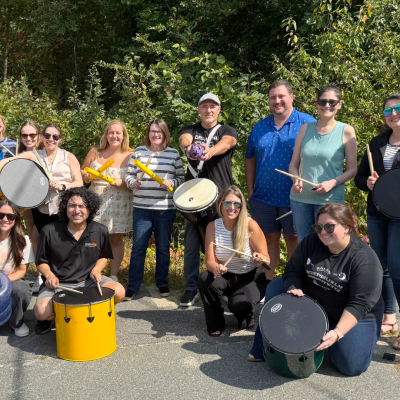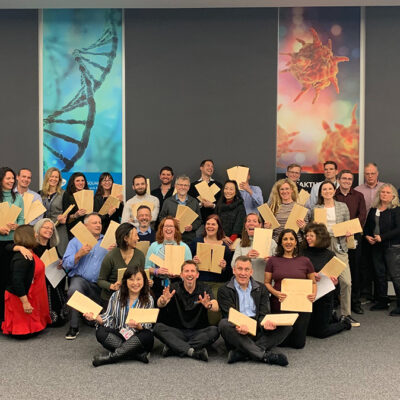There’s been a lot of talk recently about DEIB (diversity, equity, inclusion, and belonging). According to a McKinsey report, diverse and inclusive companies are 35% more likely to outperform their competitors. A toxic and unjust workplace on the other hand can negatively affect employee wellbeing, teamwork, creativity, turnover, and profitability. It’s imperative for businesses to make an effort in diversity and inclusion if they want to be competitive in the modern marketplace.
In our most recent podcast—Diversity, Equity, and Inclusion in the Workplace—we talked with Melanie Miller, an experienced diversity consultant, about the importance of DEI, the difference it can make, and how to foster a more inclusive workplace. So today, let’s dive into the world of diversity, equity, inclusion, and belonging. We’ll cover what it means, why it matters, and how to build your own strategy to implement it in your workplace.
Breaking Down the Meaning of DEIB
To start, let’s look at the DEIB meaning. This is a commonly misunderstood term, so having a good understanding of what it actually means is key.
Diversity
Diversity at its core is about differences. Those can be differences in gender, race, socioeconomic background, cultural background, and more. Miller summed this up well, saying:
“Diversity is all the differences and similarities people show up with. It’s all the differences that you have in your workforce. It’s all the differences that you have in the community that you serve. It’s the differences in your marketplace, and it’s the differences that are on your team.”
These differences strengthen teams and businesses by offering different viewpoints that can drive creativity, help deal with blind spots, and create an inclusive environment.
Equity
Equity is an acknowledgment that not everyone has access to the same opportunities and resources, and it is the effort to ensure that this disparity is addressed. Employees are valued for their skills and abilities instead of their characteristics.
Consider degree requirements. Not everyone is afforded the opportunity to get a four-year degree. To be more equitable, you may consider dropping the degree requirement for certain roles and instead focus on a candidate’s ability to perform the duties required for the role.
Inclusion
Inclusion is fairly straightforward and is about how comfortable, safe, and connected employees are to their workplace and coworkers. In an inclusive workplace, employees feel like they belong, are supported, and can communicate freely.
A lack of inclusion is often associated with toxic work environments, which can quickly result in high turnover, lowered morale, productivity, and other negative outcomes. An inclusive workplace on the other hand can have the opposite effect. Employees feel comfortable and confident, which can bolster teamwork, creativity, and innovation, and ultimately result in a more productive workplace.
Belonging
As you might have guessed, belonging relates to how valued and connected employees feel in the workplace, resulting in a sense of belonging. This is closely tied to diversity, equity, and inclusion. Miller highlighted this connection during our conversation when she said:
“Either you create an environment where somebody feels like they’re included or not. And if I feel really included and valued and respected, I’m going to feel like I belong in your organization.”
Employees feeling like they belong in the workplace is incredibly important. Employees who feel they belong are more confident, driven, and motivated, which helps the bottom line.
DEI Vs. DEIB
Before going any further, it’s important to touch on DEI vs DEIB. Belonging was a more recent addition to the acronym, and many aren’t aware it was added or why it is an important addition. So let’s dive deeper into that distinction.
At its core, DEI has the same goal of creating a more positive and inclusive work environment. Three-quarters of the acronyms are the same, so it makes sense that they are very similar and have similar aims. However, it lacks the last step necessary to tie it all together—belonging.
You can think of belonging as the capstone or crucial finishing touches to DEI. It is the end goal of DEI—creating an environment where people feel connected, comfortable, and like they belong in their workplace.
Why is Belonging Important?
So, why exactly was the ‘B’ added to DEI, and why is it so important in DEI&B? As just mentioned, belonging is the ending aim of DEI. It’s crucial to not overlook that important final step, so it was added to the acronym.
If there’s a sense of belonging in the workplace, that means employees are supported by their community, are valued for their contributions, and are provided opportunities for growth and personal development.
These are all closely connected to the other aspects of DEI—diversity, equity, and inclusion. Those factors are all required to create a sense of belonging, so it makes sense to add belonging as the final piece of the puzzle.
The State of Diversity, Equity, Inclusion, & Belonging
It’s easy to talk about DEIB in theoretical and abstract terms, but it’s necessary to look at the state of things on the ground as well. So let’s take a look at where things are at now so you have a sense of what other businesses are doing and what challenges you may encounter.
To start, 69% of executives say diversity and inclusion is an important issue according to Glassdoor. Furthermore, an EY survey found that 63% of employees prioritize DEIB programs when looking for a job. That number increases to 73% for Gen Z. Based on those statistics, it’s clear that DEIB is something that both employers and employees think is important. Executives are trying to undergo business transformations to create more diverse and inclusive workplaces, and employees are taking note of those initiatives.
All that said, diversity and inclusion efforts are not without their challenges. Things like resistance to change, lack of awareness, inadequate policies, and even political differences can stand in the way of creating equitable and inclusive workplaces. One way around some of these challenges is team building. Events like Breaking Barriers and Squad Games can help to bring teams together and see the importance of DEIB initiatives.
Importance of DEIB in the Workplace
Now, let’s focus a bit more on the importance of DEIB in the workplace. Here are some of the biggest benefits.
1.) Enhances innovation & creativity.
Diverse perspectives lead to better problem-solving and innovation. When you have more ideas from all sorts of people with different backgrounds and thought processes, you’re going to be more innovative and have enhanced innovation and creativity.
2.) Improves employee engagement & retention.
Employees who feel they belong will rarely look elsewhere for work. Employees who feel valued will go the extra mile to do their best.
3.) Improves productivity.
When employees feel supported, they perform better. They’re more confident and productive workers because they know their managers and coworkers have their backs.
4.) Helps company reputation.
Employees value DEIB efforts, and an inclusive workplace attracts top talent, loyal customers, and positive attention. This is one of the main reasons why navigating diversity and inclusion is essential.
5.) Identifies blind spots.
Everyone has blindspots, and it can be hard to know they exist without a diverse group of people to identify them. Miller shared a great story during our conversation that drives this point home:
“They called it the Nova after the shining star and sold beautifully here. Then they shipped it down to Latin America. It didn’t sell well, and of course they put a committee together to figure out why. They found out… if you’re speaking Spanish, no va means no go. So they were calling this car the no-go car.”
Building Your DEIB Strategy
To wrap things up, here are some actionable steps to help you build your own DEIB strategy and undergo an organizational transformation towards diversity and inclusion.
- Get buy-in from leadership. The first step is getting leaders on board. Employees follow their leaders, so having leadership that’s ready to push toward diversity and inclusivity is key.
- Assess your current situation. Figure out the current state of DEI&B in your organization. This lets you figure out where to focus efforts, see how difficult it may be, and create a plan.
- Assemble your team. You need a team to lead your efforts, and assembling a strong and diverse team that understands what the goal is makes the entire process much easier.
- Establish clear objectives. Any initiative requires goals, so you need to establish clear, measurable, and attainable objectives you and your team can work towards achieving.
- Establish roles and responsibilities. Once you have established objectives, you need to determine who is doing what on your team and what their responsibilities are. Again, this helps make the process much smoother.
- Determine your timeline. You also need to establish a timeline to ensure that you are actually meeting your goals. Determine whether this is going to take place over weeks, months, or whatever timeline you have in mind.
- Prepare a written plan. Lastly, you need a written plan that can be used as a guide by everyone involved. This helps keep everyone on track and on the same page.
Embrace DEIB in the Workplace with TeamBonding
DEI&B is highly important in the workplace, as it can result in increased engagement, productivity, creativity, retention, and more. While embracing diversity and inclusion in the workplace can be a challenge, bonded teams are more likely to learn from these initiatives.
Partner with TeamBonding to help create more cohesive teams that embrace these initiatives and drive positive changes. We have many DEI programs that are perfect for bringing teams closer while learning about diversity, equity, inclusion, and belonging. You can make your workplace more open, accepting, creative, and productive by utilizing our events, so get in touch with us today.
















